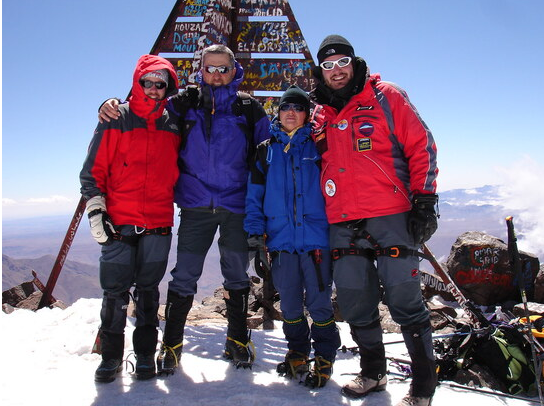
Trekking in Morocco could be anything from far-stretching desert to dramatic mountain tops - and a whole lot in between. And yet, it's safe to say that hiking isn't what Morocco is better known for. If we were to play the phrase association game today and say “Morocco”, you most likely wouldn't say “trekking” can you? You'd be more prone to say something such as “desert”, “sand”, "mint tea" or maybe “tagine” (yum) - but seriously, trekking in Morocco can be really quite something.
Unlike many countries, Morocco doesn't have any cross country footpaths or famous trekking trails running through it. But that doesn't imply that there aren't amazing treks which aren't quite as popular, or that there are no long treks in Morocco. They are, and they're superb. The hiking in Morocco is simply largely untapped. To see what's on offer, you'll have to know where in fact the mountains are – and in particular, where all the exciting bits are.
There four main mountain ranges in Morocco are:
The High Atlas
The Middle Atlas
The Anti-Atlas
The Rif Mountains
Then, just to spice things up, the edge of the Sahara desert creeps into Morocco. If you're curious about what it's like trekking on sand, there's your challenge. There are an astounding 11 National Parks in Morocco too. So, as you are able to tell already, the trekking in Morocco could be incredibly diverse. There are lots of reasons to attend Morocco for hiking - but where specifically to go? Well, listed below are the main ranges.
The High Atlas
All the big peaks in Morocco can be found in the High Atlas mountains. Morocco has five mountains above 4000m: Toubkal, Ouanoukrim, M'Goun, Afella and Akioud. Those have been in height order, with Toubkal at the highest and Akioud only just rendering it to the 4000-ers category. A lot more excitingly, these top three peaks also are actually the greatest three mountains in the complete of North Africa.
Mt Toubkal is North Africa's highest peak. At 4167m tall, attaining the summit of Toubkal isn't any mean feat. In winter it is certainly mountaineering, with all the associated paraphernalia needed to reach the summit safely. In summer, the elements could possibly get extremely hot. Your absolute best possibility of a snow-free-but-not-boiling trek is in September to October, or April to May. That's when it's cool enough to hike but not cold you need crampons. Treks are possible in high summer, but expect it to be very hot.
Toubkal is just a multi-day trek rather than a day trip. Around the foot of the mountain you'll pass the Kasbah du Toubkal. Then, climbing up, you must each the refuge up the mountain on day one, and then climb to the specific peak of Toubkal the following day. Good local guides will tell you the history of the region en route - of the Berber people and Berber villages, and of the first people to make it down Toubkal in 1923.
For more details please visit morocco atlas mountains treks.
No comments:
Post a Comment